Sinigang has always been our family's go-to comfort food, especially during rainy season. While I've made countless pots of the usual pork and shrimp versions, it wasn't until I tried making Sinigang na Baka that I truly discovered what I'd been missing all along.
The way the beef short ribs slowly simmer until they're melt-in-your-mouth tender, releasing their rich flavors into that signature sour broth, is absolutely game-changing.
Once you try this recipe that's been perfected through years in my kitchen, you'll understand why this hearty soup holds such a special place in every Filipino's heart.
It's become my ultimate version of sinigang, the kind that makes everyone at the table fight over the last pieces of fall-off-the-bone meat and the perfectly soaked kangkong leaves.
What is Sinigang na Baka?
Sinigang na Baka is a classic Filipino sour soup featuring tender beef short ribs simmered in a clear, tamarind-based broth with crisp vegetables. This hearty dish balances rich, meaty flavors with bright acidity and fresh vegetables like taro, radish, and water spinach, creating a comforting meal that's both nourishing and deeply satisfying. The beef slowly cooks until fork-tender while the broth develops its signature asim-kilig (mouth-puckering sourness) that Filipinos love.
Jump to:
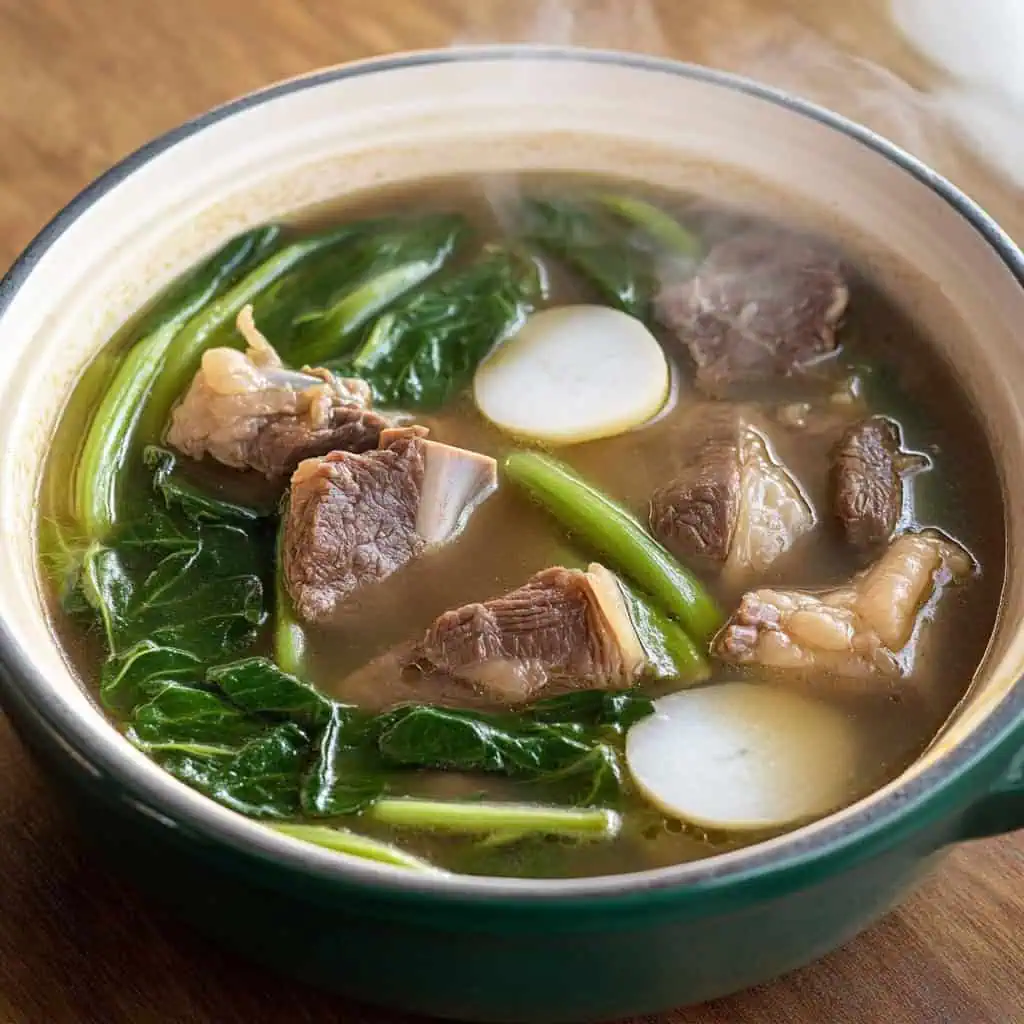
Why You'll Love This Recipe
- Authentic Filipino comfort food passed down through generations
- Clear, flavorful broth with the perfect balance of sour and savory
- Fork-tender beef that falls off the bone
- Loaded with nutritious vegetables
- Can be made ahead for even better flavor
- Naturally gluten-free and dairy-free
Ingredients
These ingredients create the perfect balance that makes Sinigang na Baka special. Beef short ribs provide rich flavor and become fall-off-the-bone tender through slow cooking. Tamarind delivers the signature sourness that defines sinigang, while fish sauce adds depth and umami.
The vegetables aren't random. Taro adds starchy thickness to the broth, radish contributes a subtle peppery crunch, and kangkong (water spinach) offers a delicate texture that soaks up the flavorful broth. Finger chilies provide gentle heat without overwhelming the dish.
Together, these ingredients create layers of flavor that have made this soup a beloved Filipino comfort food for generations.
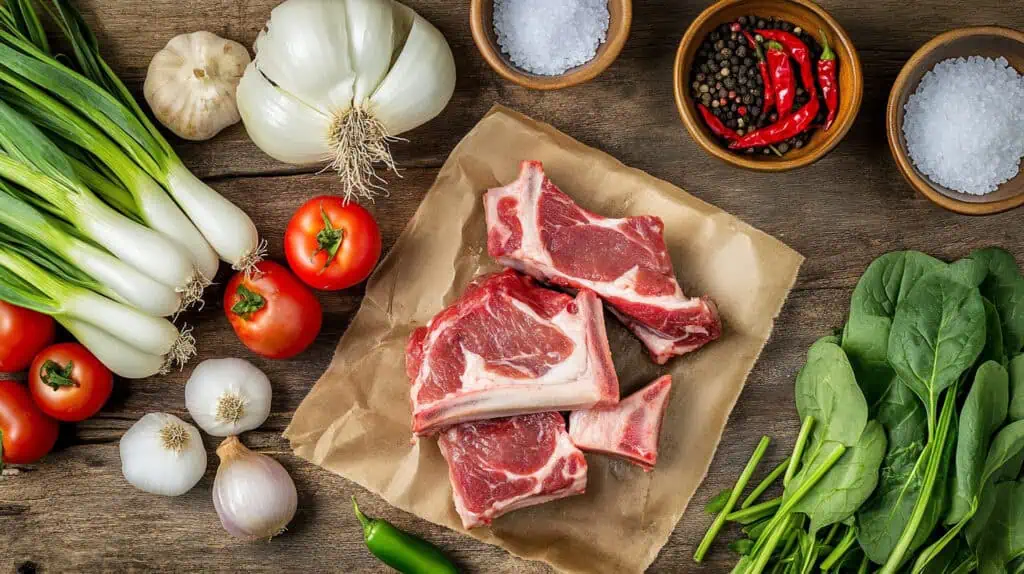
For the Broth Base:
- 3 pounds beef short ribs
- 10 cups water
- 1 large onion, peeled and quartered
- 2 large Roma tomatoes, quartered
- 1 tablespoon fish sauce
- 1½ packages (1.41 ounces each) tamarind powder or 15 fresh tamarind pieces
- Salt and pepper to taste
Vegetables:
- 6 pieces taro, peeled and halved
- 2 finger chilies
- 1 white radish (6 inches), peeled and bias-cut
- 1 bunch water spinach, separated into stalks and leaves
- Optional: eggplant, okra, long beans
Equipment
- Large heavy-bottom pot or pressure cooker: Essential for achieving tender meat and developing rich flavors. The heavy bottom prevents scorching and ensures even heat distribution.
- Sharp knife: For precisely preparing vegetables to ensure they cook evenly.
- Wooden spoon: Allows for gentle stirring without scratching your pot while distributing flavors.
- Soup ladle: For serving the soup without breaking the vegetables or splashing the flavorful broth.
- Fine-mesh strainer: Used if preparing fresh tamarind to remove seeds and pulp from the sour liquid.
- Measuring cups and spoons: Ensures accurate ingredient proportions for balanced flavors.
- Cutting board: Provides a stable surface for safely preparing ingredients.
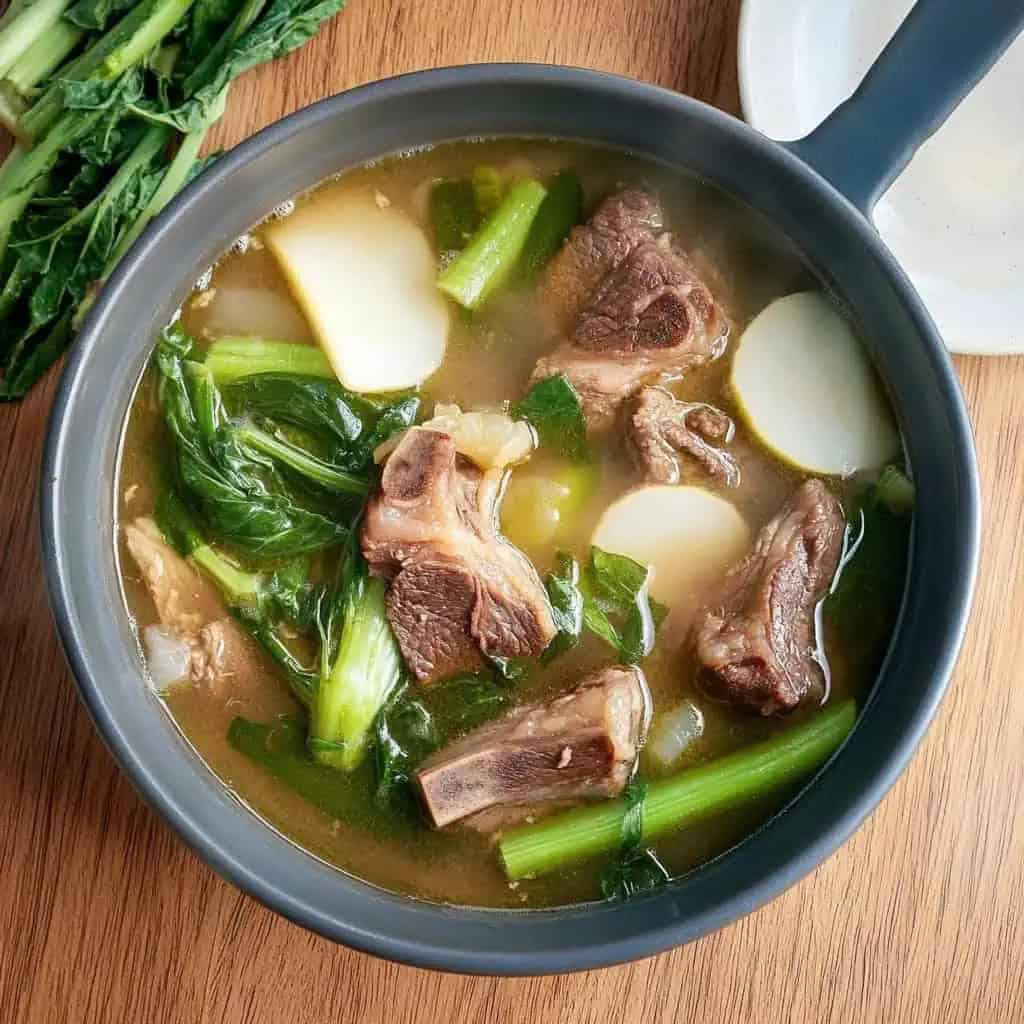
How To Make
- Prepare the broth base: Place your beef short ribs in a large pot and add enough water to cover the meat. Bring this to a boil over medium-high heat. As it boils, remove the gray foam rising to the top with a spoon to get a clear broth.
- Develop the flavor base: When the broth looks clear, add your quartered onions, tomatoes, and fish sauce. Lower the heat to a gentle simmer, cover the pot, and cook for about 1 to 1½ hours until the meat easily pulls away from the bone. Add more water occasionally if needed to keep the meat covered.
- Add hardy vegetables: Once the meat is tender, add the peeled and halved taro. Let these cook for about 7 minutes until they start to soften. Add your finger chilies (keep them whole for mild heat or cut them for more spiciness) and the sliced radish. Let these cook for another 5 minutes.
- Prepare the greens: While waiting, prepare your kangkong by cutting off the tough bottom ends and separating the stalks from the leaves.
- Add the souring agent: Now add your tamarind powder to the pot and stir until it dissolves completely. Taste the soup and add salt and pepper as needed.
- Finish with delicate vegetables: Add the kangkong stalks first and cook for a minute. Then add the leaves and cook just until they turn bright green and slightly wilted, about another minute. Don't overcook the leaves or they'll become too soft.
- Alternative fresh tamarind method: If using fresh tamarind instead of powder, prepare it while the meat is cooking. Boil the tamarind in a cup of water until soft, mash it well with a fork, then strain the liquid to remove seeds and pulp. Add this to your soup until it's as sour as you like.
- Final touches: Turn off the heat as soon as the kangkong leaves are wilted. Serve your sinigang hot in bowls, with steaming white rice on the side. For extra flavor, serve with a small dish of fish sauce with chilies on the side.
Remember: The key to great sinigang is getting the right balance of sour and savory flavors, and making sure your meat is tender while keeping your vegetables crisp.

Tips from Lola's Kitchen
- Choose beef with marbling: Select beef ribs with good marbling for the richest, most flavorful broth that will give your sinigang depth and character.
- Master the simmer: Never boil the soup vigorously after adding vegetables—a gentle simmer preserves their texture and nutrients.
- Timing is everything: Add kangkong leaves last and cook briefly to keep them bright green and slightly crisp.
- Pre-boil for clarity: For exceptionally clear broth, blanch the meat first for 5 minutes, drain, then start fresh with new water.
- Layer your flavors: Add the fish sauce early to allow its flavor to mellow and integrate with the meat.
- Trust your taste buds: The perfect level of sourness is personal—start with less tamarind and adjust gradually.
- Rest before serving: Let the soup rest for 5-10 minutes after cooking to allow flavors to settle.
- Serve immediately: For the best texture contrast between tender meat and crisp vegetables.
Substitutions
- Protein alternatives: Beef brisket, shanks, or bulalo (bone marrow) can replace short ribs for different texture and flavor profiles.
- Souring agents: No tamarind? Try kamias, green mango, calamansi, or guava for different sour notes.
- Vegetable swaps: Feel free to add green papaya, pechay, or corn based on seasonal availability.
- Fish sauce alternatives: Light soy sauce can work in a pinch (adjust salt accordingly).
- Taro substitutes: Potatoes or turnips can replace taro if it's not available, though the texture will differ.
- Broth enhancers: A small piece of beef bouillon can intensify flavor if your broth seems weak.
Troubleshooting
- Broth too sour? Add more water or a pinch of sugar to balance the acidity.
- Meat still tough? Continue simmering until tender—some cuts need up to 2.5 hours depending on quality.
- Vegetables turning mushy? Remember to add harder vegetables first, leafy ones last, and time each addition carefully.
- Broth looking cloudy? Ensure thorough skimming during initial boiling and maintain a gentle simmer thereafter.
- Flavor seems flat? A splash more fish sauce or a pinch of salt can wake up the flavors.
- Not sour enough? Add more tamarind powder gradually until you reach your desired level of sourness.
- Taro not softening? Some varieties need longer cooking—test with a fork before proceeding.
Storage & Reheating
- Refrigerate: Store in an airtight container for up to 3 days. The flavor actually improves overnight as ingredients meld.
- Freeze: Can be frozen for up to 2 months. Store vegetables separately when possible to prevent them from becoming mushy.
- Thawing: Thaw overnight in the refrigerator for best results.
- Reheating: Warm gently on the stovetop over medium heat until it reaches 165°F (74°C). Avoid boiling vigorously.
- Fresh additions: Add fresh kangkong when reheating frozen or leftover sinigang to maintain vegetable texture.
- Flavor adjustment: Taste after reheating and adjust seasoning as needed—the sourness may have intensified or mellowed.
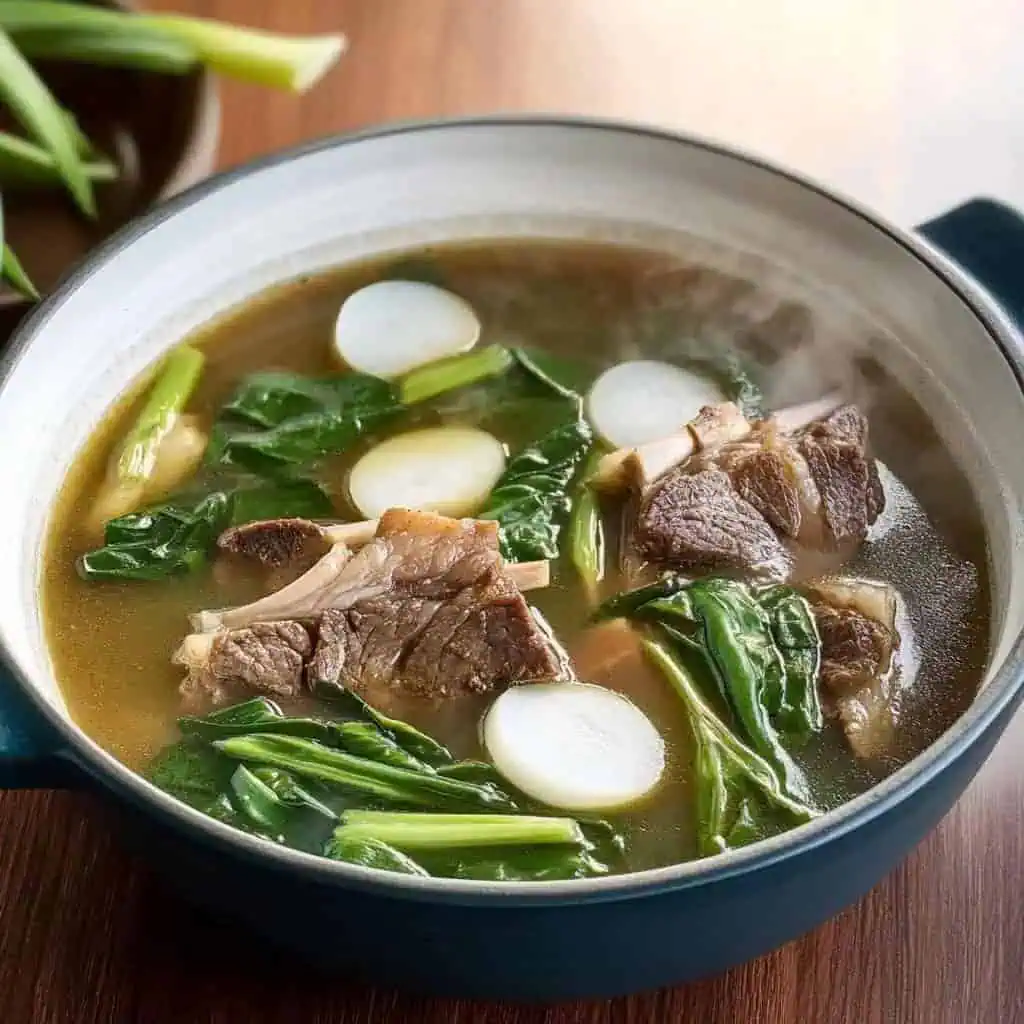
FAQ
Why isn't my beef getting tender?
This could be due to low-quality meat or insufficient cooking time. Continue to simmer until fork-tender, which might take longer than the recipe suggests depending on your specific cut of meat.
Can I make this ahead for a party?
Yes, the flavor actually improves overnight. Prepare the soup a day ahead but cook only the hard vegetables. Add fresh kangkong and other delicate vegetables when reheating just before serving.
How do I know if it's sour enough?
Start with less tamarind and adjust gradually. The ideal sourness should make your mouth pucker slightly but still balance with the savory elements of the dish. Personal preference plays a big role here!
What cut of beef is best for this recipe?
Short ribs are traditional and provide great flavor, but any gelatinous cut works well. Beef shanks, brisket, or chuck are excellent alternatives that become tender with slow cooking.
Can I use an Instant Pot or pressure cooker to speed up cooking?
Absolutely! Pressure cook the beef with onions, tomatoes, and fish sauce for about 30 minutes, then release pressure, add vegetables in stages based on cooking time, and finish with the tamarind powder.
Is this soup suitable for meal prep?
Yes, but store the broth with meat and hearty vegetables separately from delicate greens. Add fresh kangkong when reheating for best results.
My family prefers less sour flavors. How can I adjust?
Use half the recommended amount of tamarind initially, then add more to taste. You can also balance sourness with a tiny pinch of sugar.
Can I make a vegetarian version?
While not traditional, you can create a vegetable-only version using mushrooms for umami flavor, vegetable broth instead of beef, and soy sauce instead of fish sauce.
Related
Looking for other recipes like this? Try these:
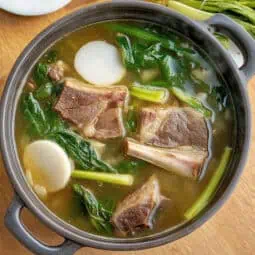
Sinigang na Baka (Filipino Sour Beef Soup)
Equipment
- Large heavy-bottom pot (kaldero) or pressure cooker for achieving tender meat
- Sharp knife (kutsilyo) for preparing vegetables
- Wooden spoon (sandok) for gentle stirring without scratching the pot
- Soup ladle (sandok) for serving
- Fine-mesh strainer (salaan) if using fresh tamarind
- Measuring cups and spoons (Panukat) for accurate ingredients measurements
- Cutting board (Sangkalan)
Ingredients
For the Broth Base
- 3 pounds beef short ribs tadyang ng baka
- 10 cups water tubig
- 1 large onion sibuyas, peeled and quartered
- 2 large Roma tomatoes kamatis, quartered
- 1 tablespoon fish sauce patis
- 1½ packages 1.41 ounces each tamarind powder (sampalok) or 15 fresh tamarind pieces
- Salt asin and pepper (paminta) to taste
Vegetables
- 6 pieces taro gabi, peeled and halved
- 2 finger chilies siling pangsigang
- 1 white radish labanos, 6 inches, peeled and bias-cut
- 1 bunch water spinach kangkong, separated into stalks and leaves
- Optional: eggplant talong, okra, long beans (sitaw)
Instructions
- First, place your beef short ribs in a large pot and add enough water to cover the meat. Bring this to a boil over medium-high heat. As it boils, you'll see gray foam rising to the top - remove this with a spoon to get a clear broth.
- When the broth looks clear, add your quartered onions, tomatoes, and fish sauce. Lower the heat to a gentle simmer, cover the pot, and cook for about 1 to 1½ hours. You'll know the meat is ready when it easily pulls away from the bone. Add more water occasionally if needed to keep the meat covered.
- Once the meat is tender, add the peeled and halved taro. Let these cook for about 7 minutes until they start to soften. Add your finger chilies (keep them whole for mild heat or cut them for more spiciness) and the sliced radish. Let these cook for another 5 minutes.
- While waiting, prepare your kangkong by cutting off the tough bottom ends and separating the stalks from the leaves. Now add your sinigang mix powder to the pot and stir until it dissolves completely. Taste the soup and add salt and pepper as needed.
- Add the kangkong stalks first and cook for a minute. Then add the leaves and cook just until they turn bright green and slightly wilted, about another minute. Don't overcook the leaves or they'll become too soft.
- If you're using fresh tamarind instead of powder, prepare it while the meat is cooking. Boil the tamarind in a cup of water until soft, mash it well with a fork, then strain the liquid to remove seeds and pulp. Add this to your soup until it's as sour as you like.
- Turn off the heat as soon as the kangkong leaves are wilted. Serve your sinigang hot in bowls, with steaming white rice on the side. For extra flavor, serve with a small dish of fish sauce with chilies on the side.
- Remember: The key to great sinigang is getting the right balance of sour and savory flavors, and making sure your meat is tender while keeping your vegetables crisp.
Tips from Lola's Kitchen
- Choose beef ribs with good marbling for the richest broth
- Never boil the soup vigorously after adding vegetables
- Add kangkong leaves last to keep them bright green
- For clearer broth, blanch the meat first for 5 minutes, drain, then start fresh
Nutrition
The Story Behind Sinigang na Baka
The story of Sinigang na Baka weaves through the heart of Filipino culinary heritage, representing our ancestors' ingenious way of combining Chinese-influenced cooking methods with native Filipino ingredients. While the more common pork and shrimp versions often take the spotlight, beef sinigang holds a special place in Filipino family gatherings, especially during the cooler months of the monsoon season when the craving for hot, sour soup becomes almost irresistible.
This hearty soup traces its roots to the pre-colonial era when tamarind trees grew abundantly across the Philippine archipelago. Our ancestors discovered that combining the fruit's natural sourness with meat and vegetables created not just a filling meal, but also helped preserve food in the tropical climate. The addition of beef, which became more prevalent during the Spanish colonial period, elevated this humble soup into a more luxurious dish that families would prepare for special occasions.
What makes Sinigang na Baka particularly special is its use of beef short ribs, a cut that releases rich collagen during the long simmering process, creating a uniquely silky broth that sets it apart from other sinigang variations. The slow cooking method, passed down through generations of Filipino home cooks, ensures that every bowl delivers that distinctive asim-kilig (mouth-puckering sourness) while maintaining the beef's fork-tender texture that simply falls off the bone.
In modern Filipino cuisine, this dish has evolved from being merely a rainy day comfort food to becoming a testament to our culture's love for layered flavors and sustainable cooking. The traditional recipe makes use of seasonal vegetables like gabi (taro), labanos (white radish), and kangkong (water spinach), reflecting our ancestors' practice of using readily available ingredients. Whether served in humble carinderias or upscale Filipino restaurants, Sinigang na Baka continues to captivate both locals and foreigners with its perfect balance of sour, savory, and umami flavors.
Today, while instant sinigang mixes have made the preparation more convenient, many Filipino families still prefer the traditional method of extracting fresh tamarind's sourness, claiming it provides a more complex flavor profile that commercial mixes can't replicate. This dedication to authenticity, combined with each family's unique takes on the recipe, ensures that Sinigang na Baka remains not just a dish, but a living piece of Filipino culinary heritage that continues to evolve while staying true to its roots.
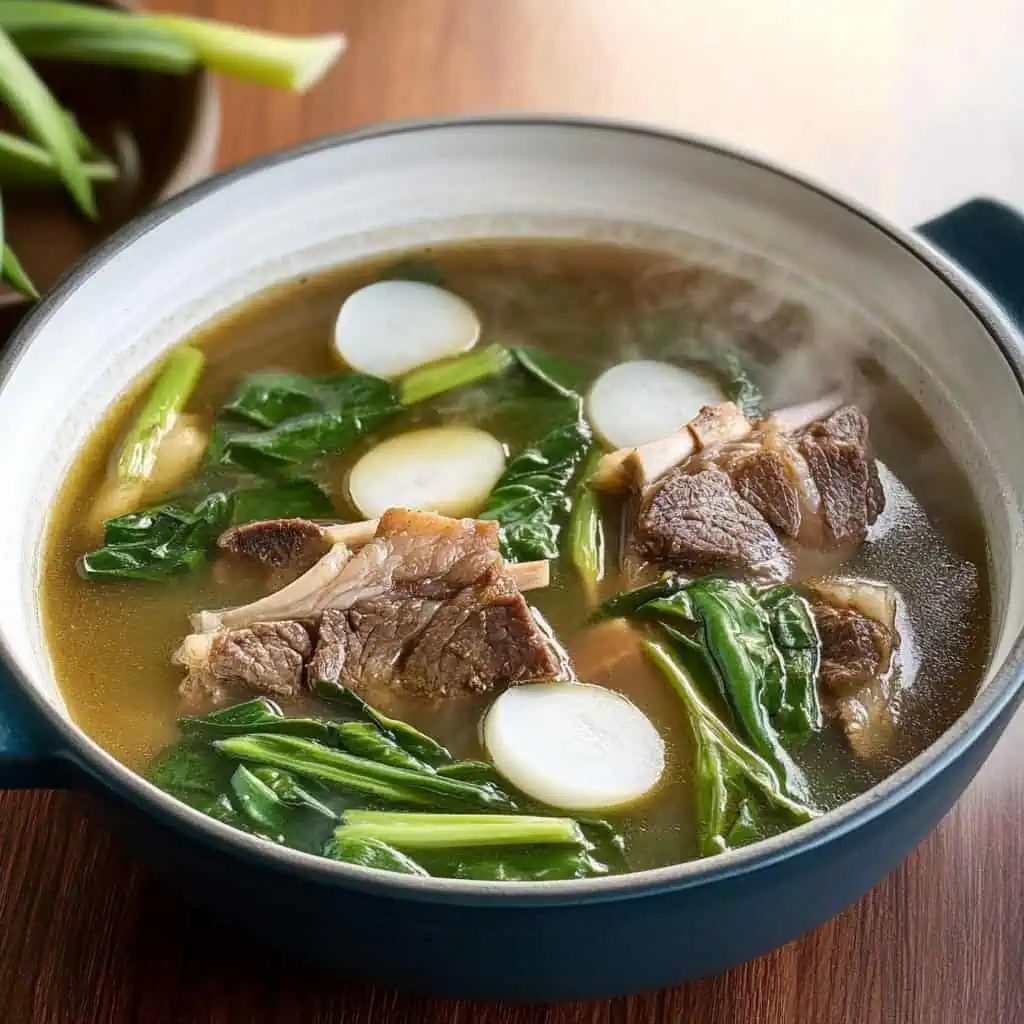






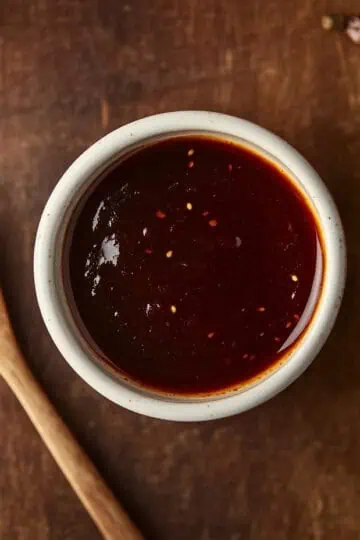
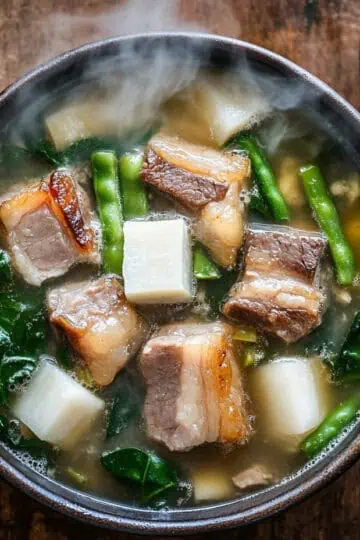

Comments
No Comments